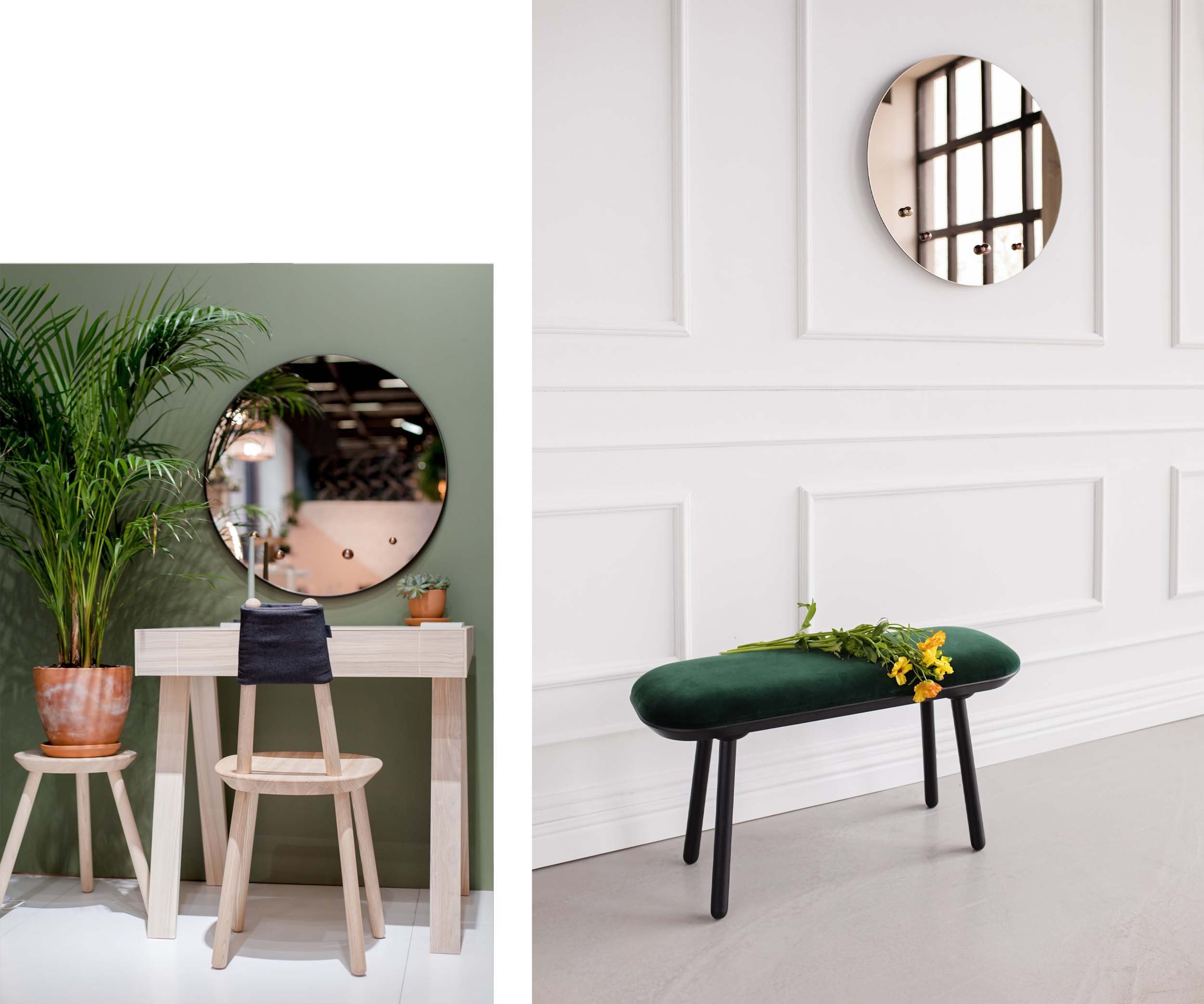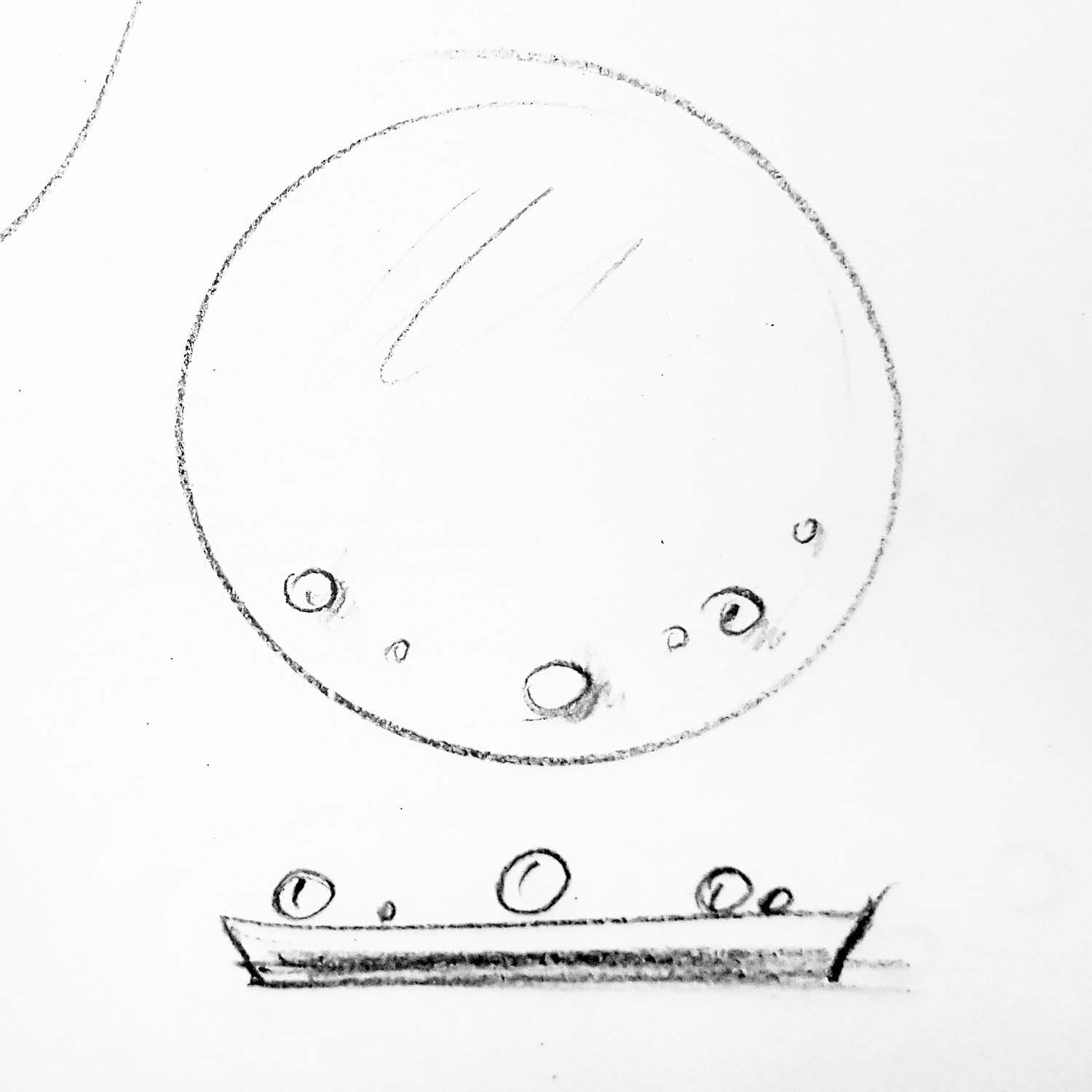MEET A DESIGNER #7:
RASA BALAIŠĖ
If we want to be amazed, we don't need things that are supernatural — nature is super enough as it is. No wonder it catches the eye of many creatives and reflects in design work, too.
On the occasion of Midsummer, we look into our mirror Dew. Inspired by dewdrops, this mirror is a chic tribute to the phenomenon's reflective and aesthetic qualities.
Dew is created by a highly versatile designer Rasa Balaišė and produced by us at EMKO. Working together, we aim to notice and embody the best of creativity — to bring inspiration into our homes and build lasting objects with an emotional charm.
MIRROR DEW — FUNCTIONAL ACCESSORY FOR VARIOUS INTERIORS
"We came up with the idea to launch our first mirror when we started using our writing desks as dressing tables and expanding our hallway furniture collection. Both situations required a mirror — a functional as well as aesthetic detail to complete these sets," — says EMKO Creative Director Audrone Drungilaite.
Available in three sizes, Dew can be bronze, dark grey, or classical, without color. "Choosing from these options, one can not only find the most suitable solution for the interior but also combine a few mirrors together, creating a composition of a functional wall decor," — says EMKO Founder Erika Markovska-Mikulskiene.
INVOLVING LOCAL ARTISANS
Mirror Dew also has its own four little "droplets" acting as functional details: they are able to hold light jewelry, at the same time matching the chosen color scheme.
These "droplets" are ceramic beads made by a Lithuanian ceramic artist Mingaile Mikelenaite. As she shares, every bead is handmade, thus — unique. First, the beads are formed from white clay using a plaster mold. Then comes the most careful stage — applying bronze, copper, or metal glaze.
NOW, LET'S TAKE A LOOK FROM THE DESIGNER's PERSPECTIVE
Rasa, what fascinates you most about being a designer?
Mainly — the ability to balance between creativity and rational logic. I have been involved in creative activities, construction, and inventions since childhood, and each time it was an attempt to create something unique to make others happy. Finally, I chose a career that combines all these hobbies and allows me to materialize various ideas. For me, design is like a tool — to reach people, solve problems, and bring joy.
Where does your inspiration come from?
The most common source of inspiration is life itself. I find it essential not to lose the curiosity and insight that children usually have — they are open to new experiences and know how to wonder and enjoy. As for the designer, it is always beneficial to nurture this inner child too and approach the world with a constant surprise. Then, new ideas come on their own, patiently waiting to be implemented.
I also carefully observe the design scene and try to be immersed in it — I attend exhibitions, showcase my work, communicate with colleagues. It helps me to better understand the current context and check how others react to my work. After all, design is created not for oneself but also for others who often have their own expectations and needs.
How would you describe your personal style?
The hallmark of my work is playfulness and sensuality, also — giving symbols and meanings to utilitarian objects. I like to create multifunctional playful objects. Things that are a little different than "uniforms" — somewhat fun, but at the same time maintaining their function and initial purpose.
Also, I seek to create objects with an emotional value — it is like giving the fourth dimension to matter that is already described in three measurements. I see a lot of meaning in such creation because I am sure that things that evoke positive emotions can also positively influence the quality of life.
Which aspects of design you give the highest priority to?
In the context of modern overproduction, it is no longer enough to create just an object. Good design must answer the needs of the current times — provide solutions, feature great aesthetics, impeccable function, and creative innovation. This could be named as responsibility and a great mastery of the artist.
How do you know when an object is finished and needs no additional work?
In mass production — it is the moment when the prototype is fully adjusted and handed in for production. For experimental items — it is when all the resources required for the object are used in the most optimal way, and the expression closest to the initial idea is achieved. And sometimes it's like the sixth sense: "that's exactly it!".
What, according to you, is the role of collaboration in design?
The collaborative aspect is vital. Designers can create and offer great ideas, but the further process should ideally be taken over by a team of engineers, technologists, marketing, and other specialists, contributing to transforming the concept into a successful product.
BLITZ QUESTIONS
Favorite work tool?
Pencil — because it initiates the embodiment of the idea. I usually use a pencil to sketch new ideas, and I really like this process. I have also used pencils for my wall decor projects, and it led to inventing an interesting personal technique, which allows me to implement monumental creative ideas.
Best soundtrack for design?
The musical background for my personal design work is Strawberry Fields Forever by The Beatles. Once, I called my retrospective exhibition Strawberry Lawn because red shades were dominant in my objects. After that, naturally, this soundtrack tends to follow me.
In a broader context, the genre's priority is jazz or classical music.
Favorite material?
It is difficult to name only one because I like a wide range of raw materials and techniques. I have created various products from almost all possible materials. Every new material is a new challenge and a way to creative growth — it is always interesting to try something new.
If quantitatively, furniture textiles dominate in my work. These materials are used in many of my design objects because of the limitless possibilities a textile formation can give.
Design-related content you'd recommend checking out?
〰️ The documentary Landfill Harmonic is a shocking story about the consequences of excessive consumption and the wonders of creativity.
〰️ Pedro Almodovar's films have a great sense of design in their storyboard, interiors, bright design objects, and even the smallest details.
〰️ The best design exhibition is the annual Milan Furniture Fair and Design Week, which floods the entire city with fresh design content.
What's the closest thing to real magic? ✨
Not that long ago, many things we now use in everyday life should have looked like the most real magic. Yet, we're getting used to technological achievements very quickly, and for some reason, those miraculous inventions are no longer surprising at all.
But there is another level of magic, for instance, the drop of dew on the grass. Isn't it magical that a liquid substance of water can transform so perfectly into a gemstone-like spherical shape? To sum up, it is these magical manifestations that I seek to transfer into the design objects I create.







